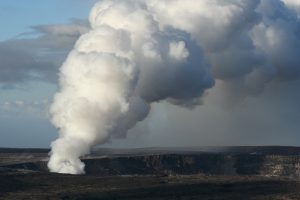Parylene and Arathane 5750: Low Outgassing Conformal Coatings
Posted by Sean Horn
Friday, March 17, 2017 7:35
@ 7:35 AM
Outgassing occurs when previously adsorbed or occluded gases or water vapor are released from some material. With respect to protective conformal coatings, outgassing encompasses the discharge of gases previously confined within a high-frequency printed circuit board (PCB) or similar assembly material, often resulting in functional difficulties.
For instance, outgassing can negatively impact the performance of PCBs used in medical implants or other monitoring devices, disrupting sterile and well-contained healthcare environments, challenging appropriate device performance and patient health. In aerospace systems, outgassing byproducts may condense, interfering with the function of systems’ optical elements, solar cells, thermal radiators and similar components. Industrial and scientific vacuum processes can also be impeded by outgassing.
Outgassing’s Potential Impact
Low levels of outgassing are associated with even high-quality/performance materials and systems; however, excess outgassing can stimulate dysfunction for components where reliable performance can be critical to such factors as patient health or mission/process success. Higher operating temperatures increase the incidence of outgassing, leading to the release of gases and moisture from cracks and impurities in component surfaces; defective assembly adhesives, lubricants, and sealants are also common sources of outgassing.
Also known as offgassing, the outgassing phenomenon often affects such emission related factors as:
- phase transitions of a substance into a gas as during evaporation or sublimation, as well as
- desorption, characterized by either discharged gaseous products of slow chemical reactions, or
- seepage from cracks or internal volumes.

Appropriate preproduction preparation and manufacture will substantially diminish outgassing, as will baking individual components/complete assemblies and cleaning their surfaces to eradicate volatiles. Applying conformal coating postproduction reduces outgassing tendencies during assembly performance. Two coating substances displaying low outgassing properties are parylene and arathane 5750.
Parylene: Near-zero Outgassing of Volatile Chemicals
Compared to liquid conformal coatings – acrylic, epoxy, silicone and urethane — the prevalence of parylene outgassing is very low. Unfortunately, complications caused by outgassing can emerge for any electronic equipment intended for use in high-vacuum environments, ranging from aerospace-based equipment to medical implants, conditions where malfunctions are potentially very dangerous.
Outgassing is often a function of thermal stability. Defined as the fractional increase in the length- or volume-per-unit rise in temperature, a coating’s coefficient of thermal expansion (CTE) indicates the degree of coating expansion when heated. Lower levels demonstrate a lesser prevalence for coating expansion, and thus a commensurately lower tendency toward outgassing. Depending on the parylene type (N, C, D), parylene CTE measures between 35° C – 70° C/ppm, the lowest levels among conformal coatings under most circumstances.
Nevertheless, the frequency and intensity of parylene-covered component outgassing grows significantly at temperatures between 150° C – 220° C and 400° C – 510° C. The result can be cross-contamination of coated surfaces, inhibiting development of a direct bond with the reactive monomer, disrupting parylene performance. In these rare circumstances, substrate and assembly components under the film can outgas, impeding PCB function.
Despite these issues, parylene surpasses NASA outgassing requirements in virtually every case, with minimal generation of by-products, catalysts, fillers or hardeners during use. One of parylene’s most basic properties — homogenous, pinhole-free covering – also supports outgassing protection. Outside of vacuum environments, prolonged exposure to direct sunlight may degrade parylene films to the degree that outgassing increases measurably.
Arathane 5750’s Outgassing Properties
A liquid urethanic elastomer previously called uralane, arathane 5750 is composed of two elements, parts 5750 A and 5750 B (LV). These components are mixed at a ratio of 9 parts A to 50 parts B (LV). When completed, arathane 5750 displays a tensile modulus that diminishes as the temperature rises. For instance, modulus levels (measured as E’MPa) are 103.5 at – 100° C; they decline markedly to 101 when temperatures are raised to 100° C.
However, arathane 5750’s CTE remains relatively stable under the same conditions; that is, raising the temperature from – 50° C to 100° C has virtually no effect on it’s CTE, which exhibits a measured consistency in the vicinity of 200 linear CTE (25° C ppm) throughout. Nevertheless, these CTE levels significantly exceed those for the parylenes (35° C – 70° C ppm), indicating a heightened prevalence toward outgassing for arathane 5750, in comparison. Soft and flexible at normal operating temperatures, arathane can crystallize during prolonged exposure to colder temperatures, making its surface more brittle, a condition that can also increase outgassing.
Conclusion
Translucent and repairable, arathane 5750 is a liquid conformal coating applied by dip, spray, and spread methods. Created specifically as a coating for PCBs and electronic components, arathane exhibits minimal outgassing when used for high vacuum or aerospace systems.
Parylene-coated devices are pinhole-free, insulating, and chemically/electrically stable, exhibiting little or no change in response characteristics during operation. Encapsulated parylene coated devices perform equivalently to hermetically-sealed units, even under pressurized conditions, further supporting outgassing protection. While arathane 5750’s low outgassing properties are useful, they do not match those of parylene.
Diamond-MT provides high-quality parylene conformal coating services. To learn more about our services and discuss your next project, contact our team of experts at 1-814-535-3505 today.
Comments
Homepage 4/17/2020. 10:17:10 AM
... [Trackback] [...] Informations on that Topic: blog.paryleneconformalcoating.com/whats-the-difference-between-potting-and-conformal-coating/ [...]

londondrugscanada.bigcartel.comlondon-drugs 4/17/2020. 10:17:10 AM
cialis uk https://londondrugscanada.bigcartel.com/london-drugs This is nicely expressed. !